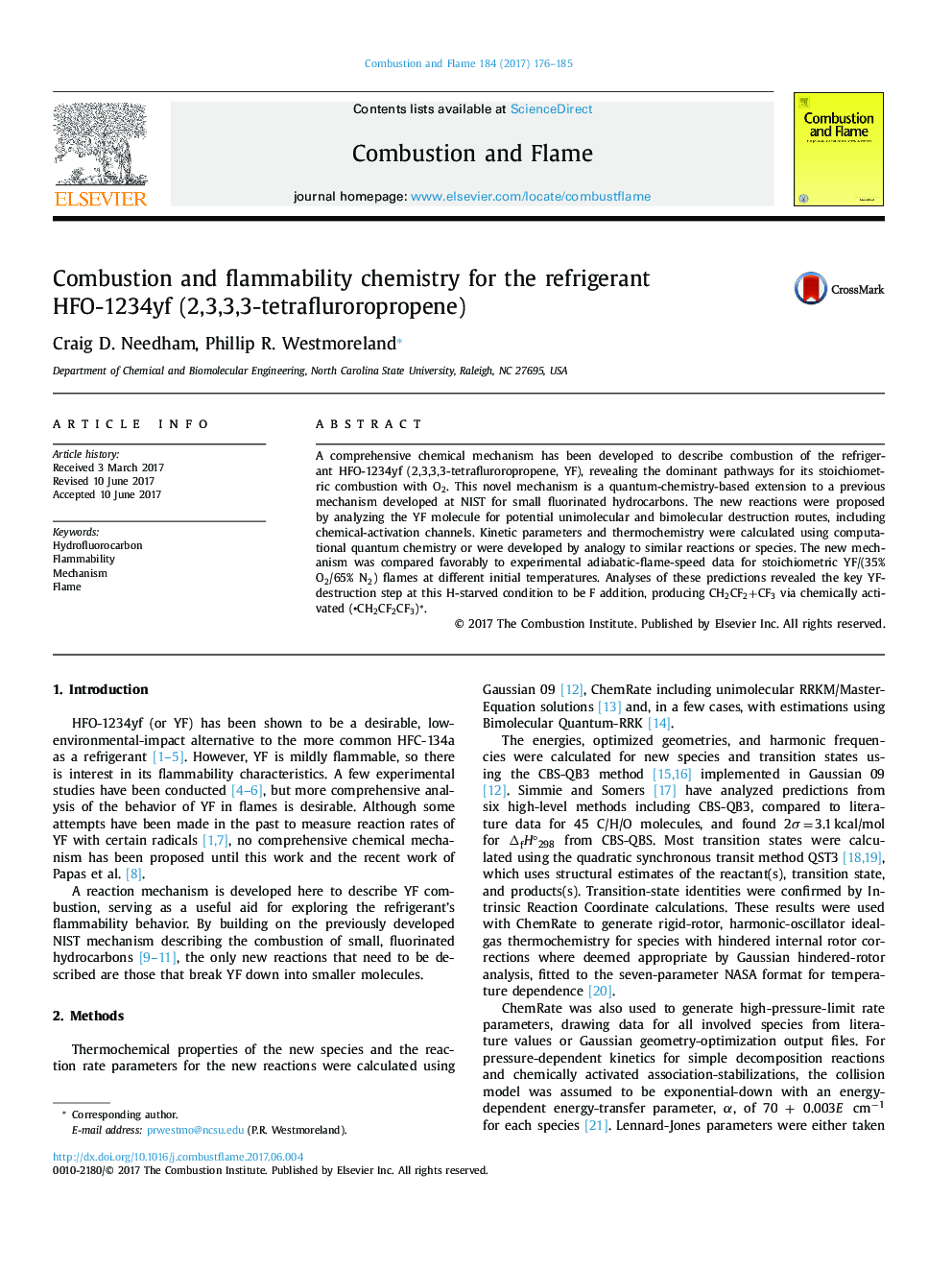| Article ID | Journal | Published Year | Pages | File Type |
|---|---|---|---|---|
| 4764456 | Combustion and Flame | 2017 | 10 Pages |
Abstract
A comprehensive chemical mechanism has been developed to describe combustion of the refrigerant HFO-1234yf (2,3,3,3-tetrafluroropropene, YF), revealing the dominant pathways for its stoichiometric combustion with O2. This novel mechanism is a quantum-chemistry-based extension to a previous mechanism developed at NIST for small fluorinated hydrocarbons. The new reactions were proposed by analyzing the YF molecule for potential unimolecular and bimolecular destruction routes, including chemical-activation channels. Kinetic parameters and thermochemistry were calculated using computational quantum chemistry or were developed by analogy to similar reactions or species. The new mechanism was compared favorably to experimental adiabatic-flame-speed data for stoichiometric YF/(35% O2/65% N2) flames at different initial temperatures. Analyses of these predictions revealed the key YF-destruction step at this H-starved condition to be F addition, producing CH2CF2+CF3 via chemically activated (
- CH2CF2CF3)*.
- CH2CF2CF3)*.
Related Topics
Physical Sciences and Engineering
Chemical Engineering
Chemical Engineering (General)
Authors
Craig D. Needham, Phillip R. Westmoreland,
